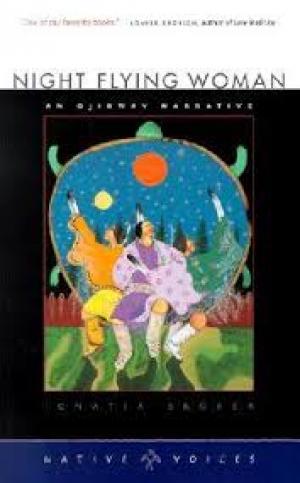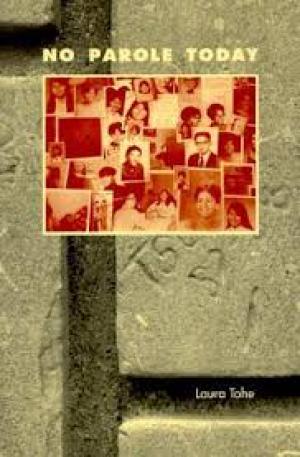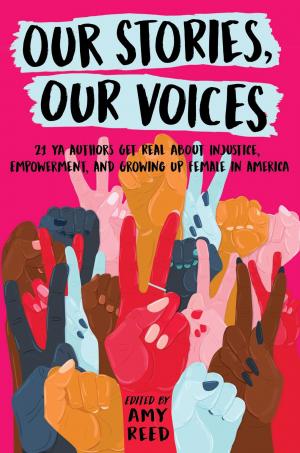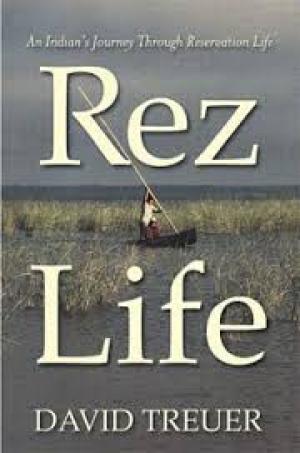Memoir & Ancestral Voices: American Indian Heritage

These memoirs and ancestral writings from Native authors cover a range of time periods, geographical settings, and themes, offering important perspectives and lessons learned for young adults.
Other Resources
Find more American Indian/Alaska Native (AIAN) titles through:
- Colorín Colorado's AIAN Booklists and Book Finder
- American Indian Youth Literature Award
- Indigenous Reads Rising (We Need Diverse Books)
- Native Children's and Young Adult Books and Resources (Cynthia Leitich Smith)
- American Indians in Children's Literature (Dr. Debbie Reese)
An Upriver Passamaquoddy
Drawing on his memories and an oral tradition, Allen Sockabasin returns to his Passamaquoddy village of Mud-doc-mig-goog, or Peter Dana Point, near Princeton, Maine. When Allen was a child in the 1940s and 1950s, his village was isolated and depended largely on subsistence hunting and fishing, working in the woods, and seasonal harvesting work for its survival.
Apple: Skin to the Core
In this memoir written in verse, prose, and imagery, Eric Gansworth tells his story, the story of his family — of Onondaga among Tuscaroras — of Native folks everywhere. From the horrible legacy of the government boarding schools, to a boy watching his siblings leave and return and leave again, to a young man fighting to be an artist who balances multiple worlds.
April Raintree
Two Métis sisters are taken from their parents as young children and reared in separate foster homes — doing all they can to maintain the ties between them and trying in different ways to live in a society that rejects and abuses them. To varying degrees both sisters struggle with learned shame, and, in a narrative unsweetened by sentiment or apology, how one of them summons the strength to face her demons is their shared story. Adapated for high school from the award-winning novel In Search of April Raintree. — Oyate
Bowman's Store: A Journey to Myself
Writer, storyteller and musician Joseph Bruchac grew up in the Adirondack Mountains of New York state. He recalls his childhood, life with his grandparents, and the way his Abenaki background came to be known. His sometimes painful memoir is sprinkled with photographs and contextualizes this time in history.
Code Talker Stories
Product Description: The Diné (Navajo) language helped win World War II, and it lives on in this book, as the Code Talkers remember the war and reflect on the aftermath and the legacy they will leave behind. The veterans, able to speak to a daughter of one of their own in English and Diné, truly shared from their hearts. They not only provided more battlefield details, but they also reveal how their war experiences affected themselves and the generations that followed.
Counting Coup: Becoming a Crow Chief on the Reservation and Beyond
In this fascinating autobiography, the chief shares the events in his life, from his birth in 1914, to his training to be a Crow warrior when he was six or seven, to his World War II experiences. He tells his story with an elder's humor. Reminiscing about his first hospital visit to have his adenoids removed, he shares his fear of whites, of Sioux, and of ghosts. Experiences from Baptist, public, and boarding schools show the prejudices that he encountered. Four pages of color and black-and-white photos show his family and the Crow reservation in Montana.
Dreaming in Indian: Contemporary Native American Voices
Truly universal in its themes, Dreaming In Indian will shatter commonly held stereotypes and challenge young adult readers to rethink their own place in the world. Divided into four sections, 'Roots,' 'Battles,' 'Medicines,' and 'Dreamcatchers,' this book offers readers a unique insight into a community often misunderstood and misrepresented by the mainstream media.
Fire in the Village
"'I was a quiet child with a gift for remembering,' Anne M. Dunn writes in the foreword to this important book. Dunn is a storyteller and elder on the Leech Lake Reservation, and the 75 stories in this collection include creation myths, fables and legends of survival. 'My mother said that a story is alive only when it is carried on the breath of the teller to the ears of those who hear,' she writes. You can hear her voice in all these stories. They are wonderfully alive." --Reviewed by Laurie Hertzel, Star Tribune books editor
Goodbye Buffalo Bay
The sequel to As Long as the Rivers Flow and When the Spirits Dance is set during the author's teenaged years. In his last year in residential school, Lawrence learns the power of friendship and finds the courage to stand up for his beliefs. He returns home to find the traditional First Nations life he loved is over. He feels like a stranger to his family until his grandfather's gentle guidance helps him find his way, discovering a new sense of freedom and self-esteem.
Growing Up Native American
'What does it mean to grow up Native American?' That is the question that frames this collection of works by twenty-two Native American writers from the United States and Canada. Some of the work is excerpted from works of fiction, while other authors reflect on their own childhood memories. Authors include N. Scott Momaday, Joseph Bruchac, Michael Dorris, Louise Erdrich, and Luther Standing Bear.
Halfbreed
Product Description: For Maria Campbell, a Métis ("Halfbreed") in Canada, the brutal realities of poverty, pain, and degradation intruded early and followed her every step. Her story is a harsh one, but it is told without bitterness or self-pity. It is a story that begins in 1940 in northern Saskatchewan and moves across Canada's West, where Maria roamed in the rootless existence of day-to-day jobs, drug addiction, and alcoholism. It was Cheechum, her Cree great-grandmother, whose indomitable spirit sustained Maria Campbell through her most desperate times.
Healer of the Water Monster
When Nathan goes to visit his grandma, Nali, at her mobile summer home on the Navajo reservation, he knows he’s in for a pretty uneventful summer, with no electricity or cell service. Still, he loves spending time with Nali and with his uncle Jet, though it’s clear when Jet arrives that he brings his problems with him. One night, while lost in the nearby desert, Nathan finds someone extraordinary: a Holy Being from the Navajo Creation Story — a Water Monster — in need of help. Now Nathan must summon all his courage to save his new friend.
Howard Luke: My Own Trail
Athabascan Elder Howard Luke's book, My Own Trail, was written so that Howard could share his life story and the Athabascan culture with others and for future generations. Howard has been an Elder-in-Residence at the University of Alaska Fairbanks. He lectures and teaches a wide variety of subjects such as piloting boats, building sleds, butchering moose and, most importantly, the value of respect. — Alaska Native Knowledge Network
Indian Boyhood
Eastman (1858-1939) grew up in a traditional Santee environment, which he describes in this, his first book. Called Hakadah ("pitiful last") at birth, he was given the name Ohiyesa, Winner, after playing a key role in an important lacrosse victory. Indian Boyhood, "an imperfect record of my boyish impressions and experiences up to the age of fifteen years," ends with the return of Ohiyesa's father who had been presumed dead for many years but was actually serving time in prison, where he had converted to Christianity. — Oyate
Land of the Spotted Eagle, New Edition
Product Description: When Standing Bear returned to the Pine Ridge Sioux Reservation after sixteen years' absence, his dismay at the condition of his people may well have served as a catalyst for the writing of this book, first published in 1933. In addition to describing the customs, manners, and traditions of the Teton Sioux, Standing Bear also offered general comments about the importance of Native cultures and values and the status of Indian peoples in American society.
March Toward the Thunder
Fifteen-year-old Louis, an Abenaki Indian from Canada, enlists in the U.S. Army in 1864 and serves with New York's Irish Brigade. Basing the main character on his great-grandfather, Bruchac takes readers close to the Civil War soldier's reality, from grimy field hospitals…to the grim battlefields…Appended are an author's note on his family history, another on the Irish Brigade, and a bibliography of source materials. — Booklist
Moose to Moccasins: The Story of Ka Kita Wa Pa No Kwe
Having been born in a tent on Bear Island, Lake Temagami in 1908, Madeline Katt Theriault could recall an earlier independent and traditional First Nations lifestyle. In this book, the late author proudly tells of her youth and coming of age by sharing her vivid memories and drawing on exceptional old family photographs. In her own words, she writes of a time long ago — a time that was difficult, but not without personal rewards.
Native Athletes in Action (Native Trailblazers)
"Along with well-known figures such as Jim Thorpe and National Hockey League hit man Jordin Tootoo, Schilling introduces Olympic wheelchair racer Cheri Becerra-Madsen, speed skier Ross Anderson, ice dancer Naomi Lang, and eight other less-familiar Native American athletes of the present and recent past. Most of the portraits are based on personal interviews; all include tribal affiliations, career notes (sometimes in boldface), brief sidebars, and small, black-and-white action photos." — Booklist
Navajo: Visions and Voices Across the Mesa
With these heartfelt paintings, poems and memoirs, the noted Diné (Navajo) artist fulfills his stated goal of taking the reader 'into the corners of my world, the Navajo world.' Similar in conception to George Littlechild's This Land Is My Land, this book places more emphasis on the traditional and spiritual, its contemporary setting notwithstanding. The sacred intertwines with the everyday; topics here range from storytelling, a solar eclipse and a healing ritual to riding in a truck and attending a tribal fair. — Publishers Weekly
Night Flying Woman: An Ojibway Narrative
Product Description: With the art of a practiced storyteller, Ignatia Broker recounts the life of her great-great-grandmother, Night Flying Woman, who was born in the mid-19th century and lived during a chaotic time of enormous change, uprootings, and loss for the Minnesota Ojibway. This story also tells, however, of her people's great strength and continuity.
No Parole Today
This first collection, in prose memoir and poetry, of the work of Diné (Navajo) poet and teacher Laura Tohe describes attending a government school for Indian children and the challenge it presented to her socially, culturally, and expressively.
Our Stories, Our Voices: 21 YA Authors Get Real About Injustice, Empowerment, and Growing up Female in America
From Amy Reed, Ellen Hopkins, Amber Smith, Sandhya Menon, and more of your favorite YA authors comes an anthology of essays that explore the diverse experiences of injustice, empowerment, and growing up female in America.
Rez Life: An Indian's Journey Through Reservation Life
Product Description: Celebrated novelist David Treuer, a member of the Ojibwe of northern Minnesota, Treuer grew up on Leech Lake Reservation, but was educated in mainstream America. In Rez Life, his first full-length work of nonfiction, Treuer brings a novelist's storytelling skill and an eye for detail to a complex and subtle examination of Native American reservation life, past and present.
Rising Voices: Writings of Young Native Americans
Product Descriptoin: An unforgettable collection of poems and essays written by young contemporary Native Americans. Words of protest against prejudice and oppression, poems of estrangement and pain, cries for lost worlds and lost identities — but also songs of celebration and joy for the future. Recommended for classroom reading.
Rock and Roll Highway: The Robbie Robertson Story
Canadian guitarist and songwriter Robbie Robertson is known mainly for his central role in the musical group The Band. But how did he become one of Rolling Stone's top 100 guitarists of all time? Written by his son, Sebastian, this is the story of a rock-and-roll legend's journey through music, beginning with the songs and stories he learned from his mother's family as a child on a Six Nations reservation north of Toronto.
Stories of the Sioux, New Edition
Product Description: Luther Standing Bear, a Lakota Sioux born in the 1860s, heard these legends in his youth, when his people were being moved to reservations. In haunting mood and imagery, they celebrate the old nomadic life of the Sioux, when buffalo were plentiful and all nature fed the spirit. The twenty stories honor not only the buffalo but also the dog, the horse, the eagle, and the wolf as workaday helpers and agents of divine intervention; the wisdom of the medicine man; and the heroism and resourcefulness of individual men and women.
The Middle Five: Indian Schoolboys of the Omaha Tribe
Product Description: The Middle Five, first published in 1900, is an account of Francis La Flesche's life as a student in a Presbyterian mission school in northeastern Nebraska about the time of the Civil War.
The Queen of Water
Product Description: Born in an Andean village in Ecuador, Virginia lives with her large family in a small, earthen-walled dwelling. In her village of indígenas, it is not uncommon to work in the fields all day, even as a child, or to be called a stupid Indian by members of the ruling class of mestizos, or Spanish descendants. When seven-year-old Virginia is taken from her village to be a servant to a mestizo couple, she has no idea what the future holds.
The Turquoise Ledge: A Memoir
Product Description: Leslie Marmon Silko combines memoir with family history and reflections on the creatures and beings that command her attention and inform her vision of the world, taking readers along on her daily walks through the arroyos and ledges of the Sonoran desert in Arizona. Silko weaves tales from her family's past into her observations, using the turquoise stones she finds on the walks to unite the strands of her stories.
The Way to Rainy Mountain
"The stories in The Way to Rainy Mountain are told in three voices. The first voice is the voice of my father, the ancestral voice, and the voice of the Kiowa oral tradition. The second is the voice of historical commentary. And the third is that of personal reminiscence, my own voice. There is a turning and returning of myth, history, and memoir throughout, a narrative wheel that is as sacred as language itself." — Preface
Multicultural Literature
See more great related resources and videos in our Multicultural Literature section!

































